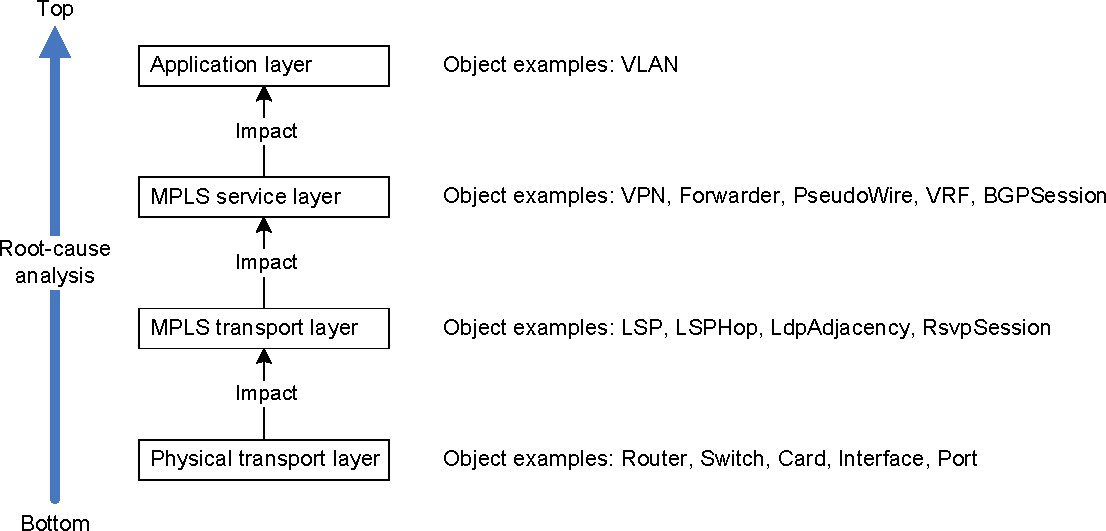MPLS Manager performs root-cause analysis at the different layers of the managed network, as shown in Bottom-up root-cause analysis .

A fundamental principle of root-cause analysis in MPLS Manager or any other VMware Smart Assurance Domain Manager is the bottom-up approach, from physical-transport layer to application layer. Problems that occur at lower levels impact objects at higher levels.
MPLS Manager performs availability-based root-cause analysis of the discovered MPLS and VPN topology objects, and relates physical-transport problems or BGP problems to the MPLS and VPN objects, along the affected data path, that are no longer accessible or experience from lack of response or performance as a result of the physical-transport or BGP problems.
When MPLS Manager detects an MPLS alarm, it checks for any physical-transport problem from IP Availability Manager or any BGP problem from Network Protocol Manager for BGP that might be causing the alarm. If it finds such a problem, MPLS Manager diagnoses the MPLS alarm as a symptom and exports the underlying physical-transport or BGP problem and the symptom to the Global Manager, as explained in Chapter 4, “MPLS Cross-Domain Impact Correlation Analysis.”
If it does not find such a problem, MPLS Manager focuses its analysis on the MPLS domain and performs the root-cause analysis that is described in this chapter.